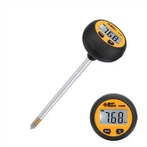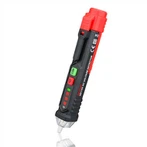How to measure the insulation protection layer of wires with a multimeter
Multimeters can only measure voltage, current and resistance or others in general. A multimeter is simply not capable of measuring the insulation properties of wires.
Wires and cables are tested by local quality and technical supervision bureaus or testing centers with special testing instruments, or entrusted to manufacturers for testing.
According to the standard of GB/T5023.3-2008, for example; commonly used polyvinyl chloride (PVC) copper core wire or power cable BV450/750 1×1.5 wire, which requires a length of 5 meters, in a specially customized sink, Let the water temperature gradually rise to (temperature 70±2°C) and soak for no less than 2 hours. The insulation resistance value should be tested by applying a corresponding DC voltage on a professional testing instrument. This process will be divided into 5 times.
The DC voltage of the internal power supply battery of the multimeter used by people is generally 9V, and there is not enough ability to determine and detect the insulation performance of the wire with such a voltage.
It is best to use a shaker to measure the cable insulation. The result of the multimeter measurement is inaccurate and can only be estimated. However, the cable insulation is seriously damaged, so it is more convenient to use a multimeter to find out the problem. The resistance between lines must be greater than 1M ohms. If it is less than 1M, be careful when using it, but the cable must be excluded from water or moisture. If there is, it must be dried before testing.
Tips for Measuring Resistance with Digital Multimeter
Here are some tips for measuring resistance with a digital multimeter:
1) Because the test current of the meter flows through all possible paths between the two probes, the resistance value measured on a resistor in the circuit is usually different from the resistor's rated value.
2) When measuring resistance, the test lead will bring an error of 0.1 Ω to 0.2 Ω. If you want to measure the resistance of a wire, you can touch the probe tips together and read the resistance of the wire. You can use the multimeter's relative value (REL) mode to automatically subtract this resistance value if desired. (For the use of the relative value function, please refer to the Fluke multimeter resource website)
3) In the resistance mode, the voltage output by the ammeter is enough to turn on the forward bias voltage of the silicon diode or transistor on the circuit. If in doubt, press C to apply a lower current on the next higher range. If the resulting value is larger, choose the larger value. Continuity is a quick "go/no-go" resistance test that distinguishes between open and closed circuits.






